

The palaces owned by the Valenti family have their own page in this site.
Palazzo Approvati (1497)
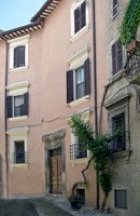
Palazzo Lucarini (15th century)
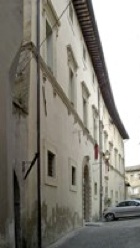
-
✴The smaller portal (16th century) bears the arms of the Lucarini and Valenti families.
-
✴The larger portal, like the windows above, dates to the 17th century.
Virgilio Lucarini established a seminary here in 1674 that became known as the Collegio Lucarini. The palace was damaged by an earthquake in 1832, at which point the college was moved to Palazzo dei Valenti di Riosecco (see below) and then to the convent of San Francesco.
In 1993, Giancarlo Politi (the founder of the Flash Art Magazine and a native of Trevi) founded the Flash Art Museum in the palace. It recently closed, and the palace now houses the Centro per l’ Arte Contemporanea.
Palazzo Natalucci
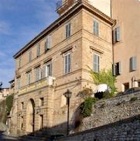
The palace seems to have been the location of the printing factory that the German printer Johann Reinhardt established in Trevi with members of the Lucarini family in 1470. This was only the fourth such establishment in Italy. Unfortunately, the business did not prosper: in 1472, its assets were sold to Evangelista Angelini da Trevi, who set up a business in Foligno (on the site of Palazzo Orfini there) with another German printer, Johann Neumeister.
The palace now houses the Hotel Trevi.
Palazzo Petrelli (16th century)

Palazzo Petroni (ca. 1600)
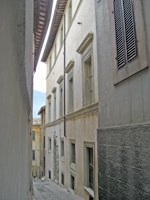

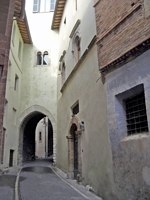
Facade in Via del Duomo Facade in Vicola del Sette Facade in Via Dogali
Grifone Petroni built this huge palace, which incorporates a number of earlier buildings. The finest of the palace’s three facades is in Via Dogali.
Portico del Mostaccio, which was another gate in the inner walls, has been incorporated into Palazzo Petroni Bartolini (in Via Dogali), as has the ex-church of San Pio V next to it.
Villa Fabri (1603)
I have not visited it yet, but there is an excellent virtual tour in the website of Pro Trevi. See also this webpage.

